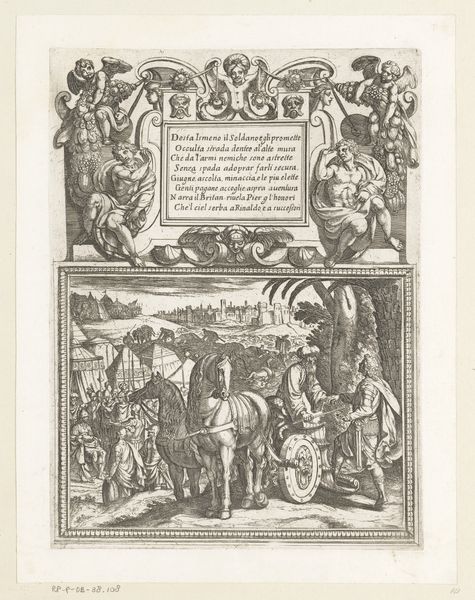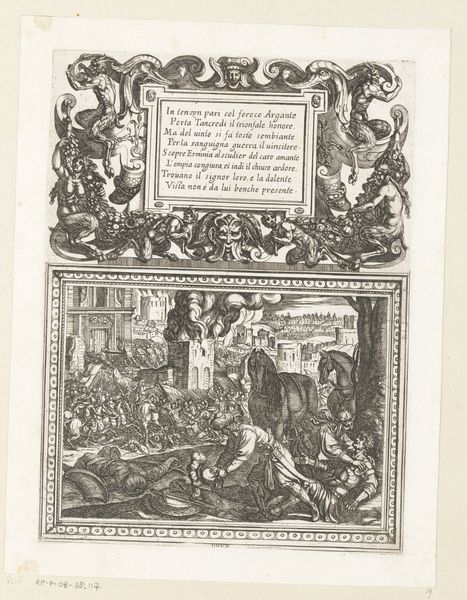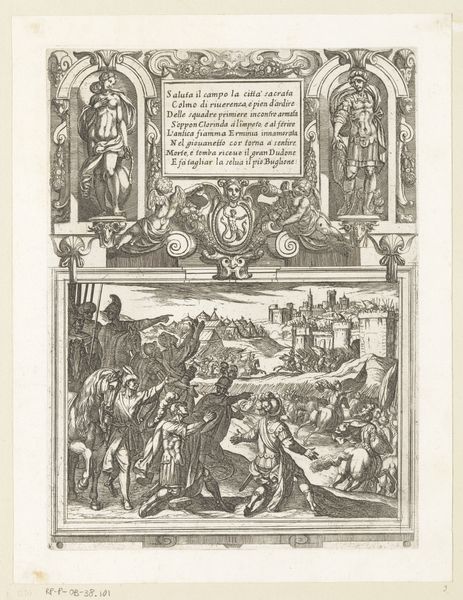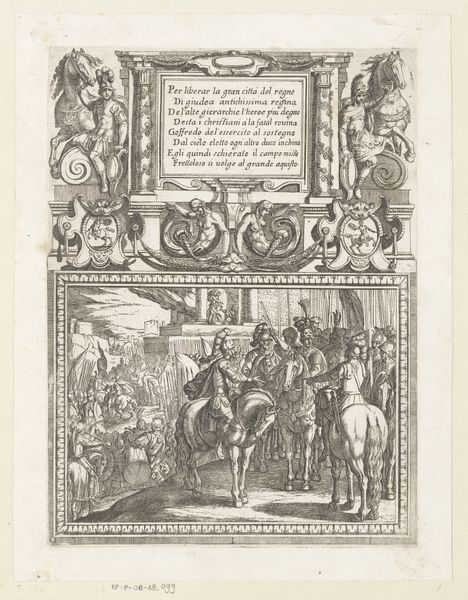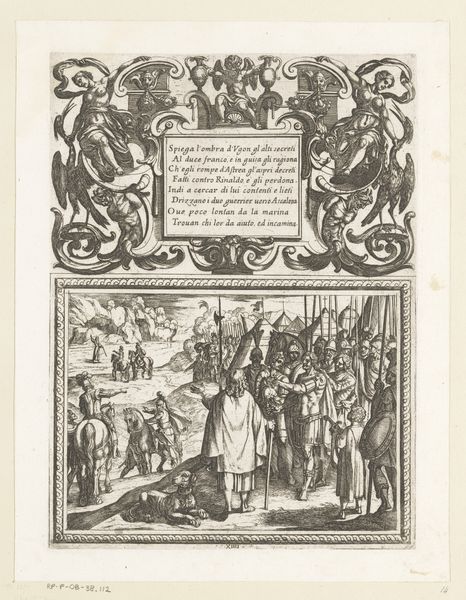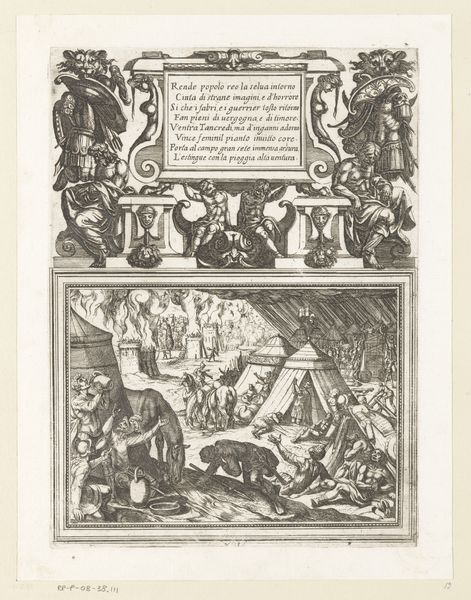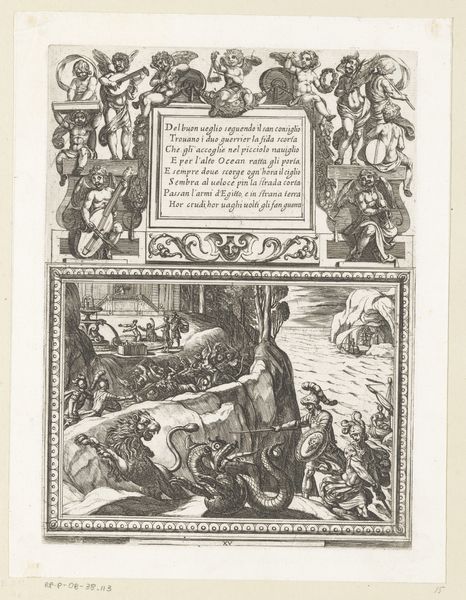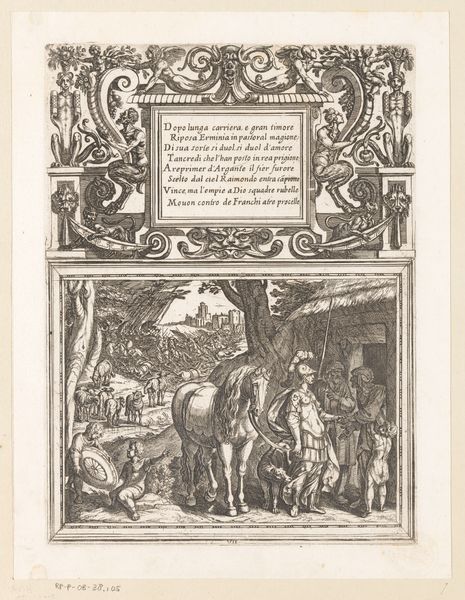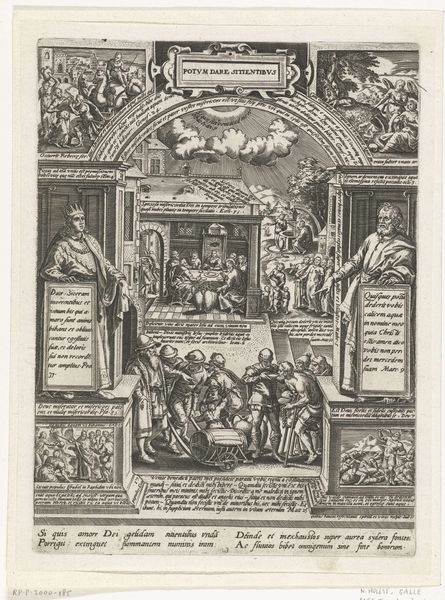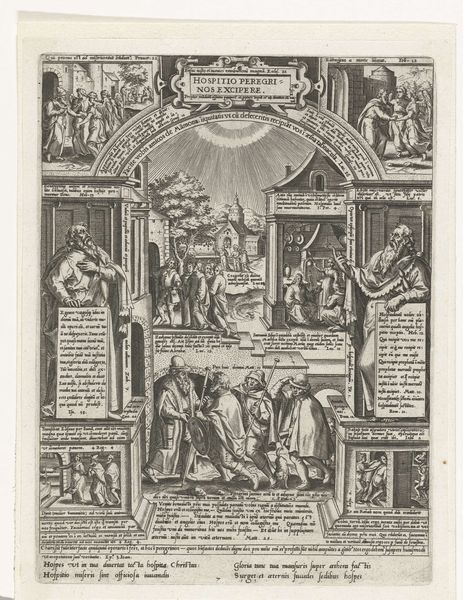
Illustratie bij Canto II van Tasso's 'Gerusalemme Liberata' 1565 - 1630
0:00
0:00
antoniotempesta
Rijksmuseum
print, paper, ink, engraving
#
narrative-art
# print
#
figuration
#
paper
#
ink
#
line
#
history-painting
#
italian-renaissance
#
engraving
Dimensions: height 275 mm, width 204 mm
Copyright: Rijks Museum: Open Domain
Curator: This is "Illustratie bij Canto II van Tasso's 'Gerusalemme Liberata'", an engraving on paper by Antonio Tempesta, dating from between 1565 and 1630. It's currently held in the Rijksmuseum collection. What strikes you about it? Editor: It feels so incredibly busy! Almost claustrophobic. The line work is so dense, especially in the lower scene. Yet, within that chaos, there's a real energy, a feeling of dramatic tension. Curator: The medium really dictates the density. As a print, engravings like these were crucial in disseminating narratives widely and relatively affordably. The linear precision achieved through engraving on a copper plate allowed Tempesta to render these complex scenes, and allowed the copies to be widely sold. Editor: Right, there's that contrast between mass reproduction and individual craftsmanship, right? The intense labour involved in the original engraving – imagine the hours spent carving that detail – and how that's multiplied into a sort of early information explosion through printing. I suppose that partly explains the composition and use of figuration in general here. Curator: Precisely. Here we have this fusion of Renaissance artistry with the burgeoning demands for accessible visuals. Notice the Italian text framed above the illustration and how it creates another layer of complexity, drawing educated viewers into the historical narrative being depicted in this print. Editor: It also seems he wants us to look into and identify a historical scene. Even if its about grand strategy and warfare, his composition uses the figures to drive a strong sense of both the power of a king on horseback, but also a huge, suffering crowd with all of them rendered individually with these meticulous and clean engravings. Curator: Absolutely. The context surrounding its creation also shows shifts in religious beliefs reflected in Tasso's text and expressed with such detail here, reflecting complex artistic expression bound with contemporary cultural currents of production and exchange. Editor: For me, there is this undeniable sense of urgency, yet also that it’s a world away and its fascinating how engravings help us have these time-traveling conversations today. Curator: I think that sums it up nicely, its legacy of visual story-telling shaped by production is powerful.
Comments
No comments
Be the first to comment and join the conversation on the ultimate creative platform.

